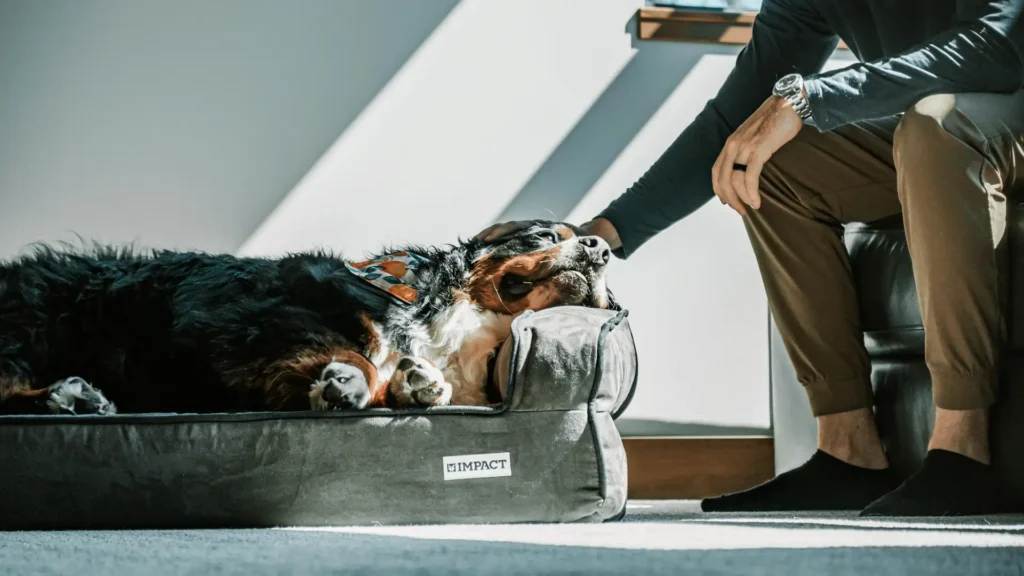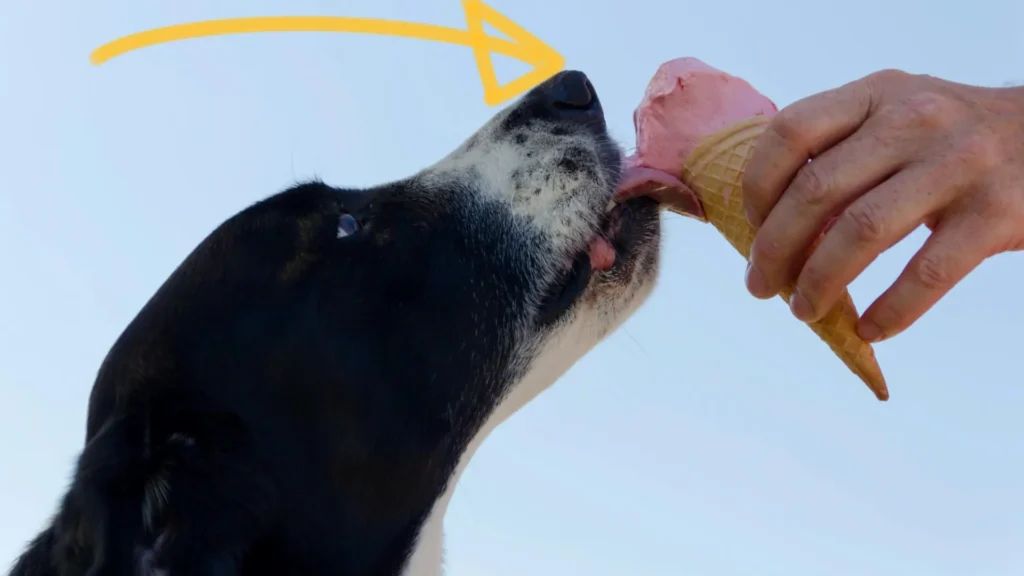Traveling with your dog by car offers opportunities for bonding and exploring new places together. Your dog’s comfort and safety are essential for a stress-free journey by car. With some preparation and planning, you can make the experience enjoyable. Here’s a comprehensive guide on how to travel with your dog by car.
Prepare Your Dog for the Trip
Traveling with your dog by car can be a wonderful experience. Ensure both you and your pet are ready for the journey ahead. Here’s an expanded guide on how to prepare your dog for the trip.
First, ease your dog into the experience. Begin by taking short trips around town before going to a long trip. These initial drives will help your dog become familiar with the sights, sounds, and sensations of being in a moving vehicle.
Pay close attention to how your dog reacts during these short trips. Some dogs may feel carsick at first. However, most dogs gradually become comfortable with repeated exposure. If your dog shows signs of anxiety, consider using calming aids such as pheromone sprays, anxiety wraps, or natural supplements recommended by your vet.
Before embarking on any road trip, schedule a check-up with your veterinarian to confirm that your dog is healthy enough for travel. This is important if your dog has pre-existing health conditions. During the visit, discuss any concerns your dog has. Your vet may recommend medications or other solutions to help alleviate these issues.
Additionally, ensure that your dog is up-to-date on vaccinations, flea/tick prevention, and heartworm medication.
Accidents happen, and the most well-behaved dogs can slip away at unfamiliar location. To prepare for the worst-case scenario, make sure your dog’s identification tags are updated with your current contact information. Include your cell phone number and other relevant details, such as your home address or emergency contact.
In addition to ID tags, double-check that your dog’s microchip information is accurate. Many shelters and veterinary clinics scan lost pets for microchips. Having up-to-date registration ensures that your dog can be quickly reunited with you if they wander off.
Pack Essentials for Your Dog
Packing thoughtfully is crucial for safe journey.
Bring enough food for the entire duration of your trip, plus a little extra in case of unexpected delays. Stick to your dog’s regular diet to avoid digestive upset. Avoid introducing new foods during the trip.
Don’t forget collapsible bowls for feeding and hydration. Portable water bottles designed for pets are also convenient. They allow you to offer water without spilling. Keep fresh water available at all times.
Always carry a sturdy leash and collar/harness. These are essential for emergencies. A reflective leash and collar improve visibility during nighttime stops. A harness provides better control than a traditional collar for larger dogs.
Pack comfort items for your dogs. They can significantly reduce stress during the trip. Bring along their favorite blanket, bed, and toy. These items provide a sense of security. Chew toys and interactive puzzles also keep your dog entertained during downtime.
Pack plenty of biodegradable waste bags for quick cleanups during pit stops. Consider bringing a small trash bag to dispose of used bags until you find a proper receptacle.
A basic pet first aid kit is a must-have for any road trip. At a minimum, it should include:
- Adhesive bandages and gauze pads
- Antiseptic wipes and spray
- Tweezers
- Scissors
- Hydrogen peroxide
- Any prescription medications your dog requires
Bring a carrier during the ride. Make sure the carrier is large enough for your dog to stand, turn around, and lie down comfortably. Line it with soft bedding and a familiar-smelling item.
Larger dogs benefit from crates or seatbelt harnesses. This keeps them restrained and prevent them from becoming distractions while driving. Crates should be secured in the backseat to minimize movement during sudden stops.
Plan Frequent Breaks
Long car rides can be exhausting for dogs. Take regular breaks during long journey.
Aim to stop every 2–3 hours, depending on your dog’s age, size, and breed. Puppies and senior dogs require more breaks. Highly active breeds need longer walks to burn off energy. Use these breaks as chances to bond with your dog and let them explore new environments.
When selecting rest areas, prioritize dog-friendly parks, scenic overlooks, and quiet spots. Always keep your dog on a leash unless they’re in a securely fenced area. Avoid crowded places, as they can overwhelm some dogs and increase the risk of accidents.
Incorporate playtime into your breaks by tossing a ball or engaging in a game of fetch. Physical activity helps reduce restlessness and keeps your dog calm during the next leg of the journey. For high-energy breeds, consider bringing a portable agility set or tug toy to keep them engaged.
Ensure Safety Inside the Car

Your dog’s safety is paramount during car travel. Secure your dog in a crate. Crates should be placed in the backseat. Never let your dog ride in the front passenger seat. In the event of an accident, airbags can cause serious injury to a dog. The backseat is much safer and allows your dog to relax without interfering with your driving.
While many dogs enjoy sticking their heads out of the window, this habit poses several risks. Flying debris, insects, and sudden braking can injure your dog. Instead, crack the window slightly to provide fresh air without compromising safety. Alternatively, install a mesh barrier to separate your dog from the front seats while still allowing airflow.
Manage Temperature
Dogs are highly sensitive to extreme temperatures. Ensure their comfort during a road trip. Managing the temperature inside your vehicle will keep your dog safe and content.
One of the most critical rules when traveling with your dog is to never leave them unattended in a parked car—even for a few minutes. On hot days, the interior of a car heats up to dangerous levels within minutes. This put your dog at risk of heatstroke or death.
Similarly, in cold weather, the temperature inside a car drops rapidly. This leaves your dog vulnerable to hypothermia. Always take your dog with you when you leave the vehicle. Otherwise, plan someone who can stay with them while keeping the engine running and the climate control on.
To ensure your dog remains comfortable throughout the journey, take some more steps. Install sunshades on your car windows to block direct sunlight. This reduces glare. It helps maintain a cooler cabin temperature. Reflective windshield shades are particularly effective at deflecting heat.
Keep the air conditioning running to regulate the temperature. Alternatively, crack the windows slightly to allow airflow.
For warm days, consider investing in a cooling mat designed specifically for pets. These mats use gel technology and evaporative cooling to lower your dog’s body temperature. Place the mat in their crate to provide relief from the heat.
In colder climates, bring along blankets to keep your dog warm. Small breeds, short-haired dogs, and senior dogs are especially susceptible to the cold. Layering help them stay cozy during the ride.
Portable fans can be a great addition for maintaining airflow, especially if you’re traveling without air conditioning. Position the fan so it circulates air near your dog’s seating area. Ensure cords and devices are out of reach to prevent accidents.
By taking these precautions, you’ll create a comfortable environment that allows your dog to relax and enjoy the ride.
Monitor Food and Water Intake
Proper nutrition and hydration are vital for keeping your dog happy during a road trip. Feeding your dog right before a long car ride can lead to nausea, bloating, and motion sickness. Instead, offer a light meal a few hours before departure. This gives their stomach time to settle. It minimizes the risk of digestive upset.
Some owners find success by skipping meals entirely on travel days. They focus instead on hydration. Skipping food doesn’t harm healthy adult dogs for short periods. For longer journey, never skip light meal.
Encourage your dog to drink regularly. But avoid giving large amounts all at once. This could upset their stomach.
If your dog is reluctant to drink in unfamiliar settings, try adding a flavor enhancer like low-sodium chicken broth to the water. This trick often entices picky drinkers to stay hydrated.
Choose Pet-Friendly Accommodations
If your road trip involves overnight stays, finding suitable lodging is crucial for both you and your dog. Fortunately, many hotels, campgrounds, and vacation rentals now welcome pets.
Before booking accommodations, research pet-friendly options online. Websites like BringFido and Airbnb often list properties that cater to travelers with pets. Pay attention to details such as:
- Additional fees for bringing a pet
- Size or weight restrictions
- Breed-specific bans
- Rules regarding leashing or crating
Many establishments require proof of vaccinations before allowing pets to stay. Bring copies of your dog’s vaccination records. Some hotels also ask for a certificate of health from your veterinarian.
In addition to your usual travel gear, pack items specific to staying in accommodations. Bring a portable bed or blanket to protect furniture. Bring cleaning supplies for accidents and familiar toys to reduce anxiety in an unfamiliar setting. Waste bags is a necessity.
Stay Calm and Patient
Traveling with a dog requires flexibility and patience. Maney unexpected challenges can arise.
Road trips rarely go exactly as planned. Traffic delays, detours, and inclement weather may disrupt your schedule. Keep extra supplies on hand to handle unforeseen circumstances.
If you see signs of stress in dogs, reassure them with gentle words and affection. Speak in a soothing tone, offer treats, and engage them with a favorite toy. Avoid scolding.
Dogs are incredibly perceptive and pick up on their owner’s emotions. If you remain calm and upbeat, your dog is more likely to mirror your demeanor. Practice deep breathing techniques or listen to calming music to help yourself stay relaxed. This will, in turn, reassure your dog.
Every dog is unique. What works for one may not work for another. Be open to adjusting your plans based on your dog’s needs. For instance, if your dog seems overwhelmed by frequent stops, try extending driving intervals. Conversely, if they appear restless, incorporate more breaks into your itinerary.
Patience and adaptability are essential traits for any pet parent embarking on a road trip.
Enjoy the Journey Together
At its core, traveling with your dog is about creating shared experiences and strengthening your bond. While preparation and safety are paramount, don’t forget to savor the moments along the way.
Bring a camera or smartphone to document your adventures together. Snap photos of your dog enjoying scenic views, playing at rest stops, and lounging in your accommodations. These memories will serve as cherished reminders of your journey.
Take advantage of opportunities to explore new trails, parks, and beaches with your dog. Many destinations offer dog-friendly activities, such as hiking, swimming, and outdoor dining. Research local parks for dogs and attractions ahead of time to maximize your experience.
During the time of successfully completing a long drive, celebrate each milestone of your dog. Reward your dog with praise and treats to reinforce positive behavior and boost their confidence.
Traveling together fosters trust and companionship between you and your dog. The shared experiences of overcoming challenges and discovering new places will deepen your connection and create lifelong memories.




